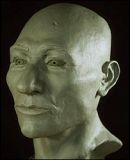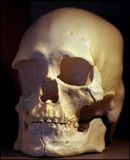



The remains were found in July 1996 along the shores of the Columbia River in Washington State.
Estimated to be more than 9,000 years old, the Kennewick skeleton is one of the oldest, most complete specimens ever found in North America.
Eight anthropologists sued to study the bones after the US government seized them on behalf of Native American tribal groups, who claim Kennewick Man as an ancestor and want to rebury his skeleton.
Since early 2004, when the US Ninth Circuit Court of Appeals ruled in the anthropologists' favour, scientists have been negotiating with government agencies on a study protocol, said Paula Barran, a lawyer for the plaintiff scientists.
"We've been chomping at the bit to get this thing done," she said.
On Wednesday 6 July, a team of researchers will gather at the Burke Museum of Natural History and Culture in Seattle for a 10-day "measurement and observation trip".
The scientists want to figure out how chemical, biological and geological processes, as well as human actions, have altered Kennewick Man's skeleton since he died.
Finally getting to it
The scientists leading this week's study met briefly at the Burke Museum in December 2004 to examine the skeleton's condition and to outline an initial study plan, explained Thomas W Stafford Jr, a Colorado-based geochemist who will participate in the investigation.
First, a group led by Smithsonian Institution anthropologist Douglas Owsley will lay out the 300-plus bone fragments "so we can see the whole skeleton in anatomical correctness", Dr Stafford told the BBC News website.
Then, Dr Stafford's group will look for mineral stains and accumulation of sediment and calcium carbonate, which should tell them how the body was positioned in the ground.
"Was he a drowning victim, was he buried on purpose with arms folded in a certain way?" Dr Stafford said.
Scientists with other expertise will try to deduce Kennewick Man's cause of death, medical problems he had while alive and whether bone breakages happened during life or after death.
Throughout the process, Dr Stafford said, Dr Owsley's group "will do, from beginning to end, the definitive measurements and photographs".
Later analyses
Some of Dr Stafford's own work will wait until after Seattle. He will take with him a few remnants of bone that were used for radiocarbon dating several years ago.
"I don't plan on taking any samples from the skeleton itself right now," he said.
Back in his lab, Dr Stafford will analyse the bones' protein composition, to see if there is enough for further radiocarbon dating to establish firmly Kennewick Man's true age.
"I may also be able to find that there's DNA preserved that hadn't been found before," he told BBC News.
A DNA sample would reveal which ancient and modern populations are most closely related to Kennewick Man, Dr Stafford added, but "if there's no DNA, then the fallback will have to be the physical measurements".
C Loring Brace, one of the plaintiffs and an anthropologist at the University of Michigan, US, thinks that the physical measurements will show that Kennewick Man was related to prehistoric inhabitants of Japan who may have migrated to the Americas separately from the people who gave rise to today's Pacific Northwest Indians.
But "just saying it is one thing," Dr Brace added. "I want to get my callipers on it, get the set of measurements, and run them through our database to see what they tell me."
The tribes who claimed Kennewick Man as an ancestor still do not want the remains studied, though.
"Our goal, our position has never changed," said Debra Croswell, a spokeswoman for the Confederated Tribes of the Umatilla Indian Reservation, one of the four tribes involved in the final court decision.
"We still want this individual reburied as soon as possible."
Dr Stafford does not agree: "If somebody else wants to look at it next week, next year, they should be able to come in just like we came in. This thing should be open. There should be no final opinion for maybe even years."
July 6, 2005
MORE (A Look at Some of the Earliest Known Americans)


Where Kennewick Man was found

The tribes who claimed Kennewick Man still oppose any scientific investigation